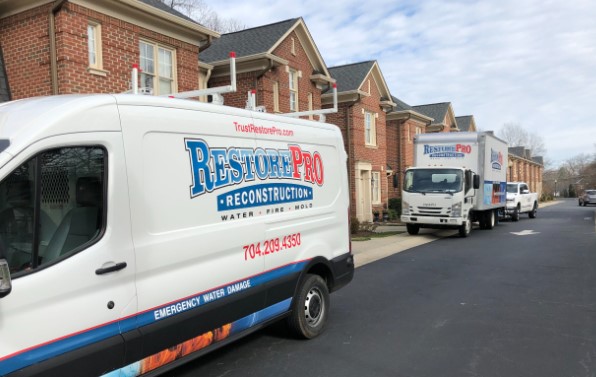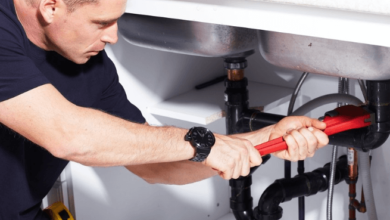Comprehensive Guide to Home Restoration Services: Restoring Your Property to Its Former Glory

Home restoration services play a crucial role in revitalizing properties that have suffered from damage, wear and tear, or neglect over time. Whether it’s due to natural disasters, aging infrastructure, or simple deterioration, homes often require professional restoration to return them to their original condition. This guide will explore the different aspects of home restoration services, including the types of restoration, the benefits of hiring professionals, the restoration process, and tips for choosing the right restoration company.
Understanding Home Restoration Services
1. What Are Home Restoration Services?
Home restoration services involve repairing and restoring a property to its original or improved condition after it has been damaged or deteriorated. Unlike remodeling, which often involves making aesthetic changes or updates to a home, restoration focuses on preserving the property’s original design and structure. Restoration can range from minor repairs to extensive renovations, depending on the extent of the damage.
2. Common Causes of Home Damage
Homes can suffer damage from a variety of sources, leading to the need for restoration services. Some common causes include:
- Natural Disasters: Floods, hurricanes, earthquakes, and fires can cause significant structural damage to homes.
- Water Damage: Leaking pipes, roof leaks, or flooding can lead to water damage, causing mold growth, wood rot, and other issues.
- Aging and Wear: Over time, homes naturally degrade, with issues like deteriorating roofs, weakened foundations, and outdated electrical systems becoming prevalent.
- Neglect: Homes that have been unoccupied or poorly maintained can fall into disrepair, requiring extensive restoration work.
Types of Home Restoration Services
1. Water Damage Restoration
In situations where water has seeped into walls, floors, or ceilings, it’s important to act quickly to prevent long-term deterioration. Services that specialize in structural damage restoration play a key role in reversing the effects of water intrusion and reinforcing the integrity of the home. Water damage is one of the most common reasons homeowners seek restoration services. Water can cause significant damage to a home’s structure, leading to mold growth, wood rot, and other issues. Water damage restoration involves:
- Water Extraction: Removing standing water from the property using pumps and vacuums.
- Drying and Dehumidification: Drying out affected areas using air movers and dehumidifiers to prevent mold growth.
- Mold Remediation: Identifying and removing mold that may have developed due to moisture.
- Structural Repairs: Repairing or replacing damaged drywall, flooring, and insulation.
2. Fire and Smoke Damage Restoration
Fire and smoke damage can be devastating, leaving homes with structural damage, soot, and unpleasant odors. Fire and smoke damage restoration includes:
- Debris Removal: Clearing out burnt materials and debris from the property.
- Soot and Smoke Cleaning: Cleaning walls, ceilings, and other surfaces to remove soot and smoke residues.
- Odor Removal: Using specialized equipment and techniques to eliminate smoke odors from the property.
- Structural Repairs: Rebuilding or repairing damaged areas, such as walls, roofs, and flooring.
3. Mold Remediation
Mold can develop in homes due to moisture issues, such as leaks or high humidity. Mold remediation services focus on:
- Mold Inspection: Identifying areas of the home affected by mold.
- Containment: Isolating the affected areas to prevent the spread of mold spores.
- Mold Removal: Safely removing mold from surfaces and materials.
- Cleaning and Disinfection: Cleaning and disinfecting affected areas to prevent mold regrowth.
4. Storm Damage Restoration
Severe storms can cause significant damage to homes, including roof damage, broken windows, and flooding. Storm damage restoration services involve:
- Temporary Repairs: Installing tarps or boarding up windows to prevent further damage.
- Debris Removal: Clearing away fallen trees, branches, and other debris from the property.
- Roof and Siding Repair: Repairing or replacing damaged roofing and siding materials.
- Flood Damage Restoration: Addressing water damage caused by flooding, including water extraction and drying.
5. Historical Home Restoration
Restoring historical homes requires specialized knowledge and expertise to preserve the property’s original character while updating it for modern living. Historical home restoration services include:
- Preservation of Original Features: Restoring or replicating original architectural details, such as moldings, windows, and doors.
- Structural Repairs: Addressing issues like foundation problems, roof leaks, and deteriorating walls while maintaining the home’s historical integrity.
- Modern Upgrades: Installing modern systems, such as HVAC, plumbing, and electrical, in a way that respects the home’s historical character.
6. Foundation Restoration
Signs of foundation failure often include stair-step cracks in brickwork, sloping floors, and gaps around doors and windows. Identifying these early warnings can help homeowners take timely action to prevent further structural damage. Consulting a foundation restoration expert can provide insight into the best repair solutions, ensuring long-term stability and safety for the home. Foundation problems can compromise the structural integrity of a home, leading to issues like cracks, uneven floors, and doors that won’t close properly. Foundation restoration services include:
- Foundation Inspection: Assessing the extent of the damage and identifying the underlying causes.
- Foundation Repair: Techniques such as underpinning, piering, and slabjacking are used to stabilize and repair the foundation.
- Waterproofing: Installing drainage systems, sump pumps, and other measures to prevent water damage to the foundation.
Benefits of Hiring Professional Home Restoration Services
1. Expertise and Experience
Professional home restoration services have the expertise and experience needed to handle complex restoration projects. They understand the best techniques and materials to use for different types of damage, ensuring that the restoration is done correctly and safely.
2. Proper Equipment and Techniques
Restoration companies use specialized equipment and techniques that are often not available to the average homeowner. This includes industrial-grade dehumidifiers, air movers, and mold remediation tools, which are essential for effective restoration.
3. Time and Cost Efficiency
Attempting to restore a home on your own can be time-consuming and costly, especially if you lack the necessary skills and tools. Professional restoration companies can complete the work more efficiently, reducing downtime and minimizing the overall cost of the project.
4. Safety and Compliance
Restoring a home, especially after a disaster, can be dangerous. Professionals are trained to handle hazardous situations, such as mold removal, electrical repairs, and structural work, in a safe and compliant manner.
5. Comprehensive Services
Restoration companies offer a wide range of services, from initial damage assessment to final repairs and cleanup. This comprehensive approach ensures that all aspects of the restoration are addressed, leaving you with a fully restored and functional home.
6. Insurance Assistance
Navigating insurance claims can be complicated, especially after a disaster. Many restoration companies work directly with insurance providers to help you get the coverage you need for your restoration project. They can provide documentation, estimates, and work with adjusters to ensure a smooth claims process.
Read also: Top Trends in HVAC Technology: Energy Efficiency, Smart Controls, and More
The Home Restoration Process
1. Initial Assessment and Inspection
The first step in the restoration process is a thorough assessment and inspection of the damage. This involves:
- Damage Evaluation: Identifying the extent of the damage and determining what repairs are needed.
- Safety Assessment: Ensuring that the property is safe to enter and work on.
- Documentation: Taking photos and notes for insurance purposes and to guide the restoration process.
2. Creating a Restoration Plan
Based on the initial assessment, the restoration company will create a detailed plan outlining the steps needed to restore the home. This plan includes:
- Scope of Work: A description of the repairs and services that will be performed.
- Timeline: An estimated timeline for completing the restoration.
- Cost Estimate: A detailed cost estimate, including labor, materials, and any additional services.
3. Damage Mitigation
Before restoration work can begin, it’s essential to mitigate any further damage. This may involve:
- Water Removal: Extracting standing water and drying out affected areas to prevent mold growth.
- Boarding Up: Securing broken windows and doors to protect the property from the elements.
- Tarping: Covering damaged roofs to prevent further water damage.
4. Restoration and Repair Work
Once the property is secure, the restoration work can begin. This includes:
- Structural Repairs: Addressing any damage to the home’s structure, such as foundation issues, roof repairs, or wall reconstruction.
- Cosmetic Repairs: Repairing or replacing damaged finishes, such as drywall, flooring, and paint.
- Mold Remediation: Removing mold and repairing any moisture-related damage.
5. Final Inspection and Cleanup
After the restoration work is complete, the company will conduct a final inspection to ensure that everything has been restored to its original condition. This includes:
- Quality Control: Checking that all repairs meet the necessary standards and that the property is safe and functional.
- Final Cleanup: Removing debris, cleaning the property, and ensuring that it is ready for occupancy.
6. Follow-Up Services
Many restoration companies offer follow-up services, such as routine maintenance and inspections, to ensure that the property remains in good condition. This can help prevent future issues and protect your investment.
Tips for Choosing the Right Home Restoration Company
1. Research and Referrals
Start by researching local restoration companies and asking for referrals from friends, family, or neighbors who have had similar work done. Reading online reviews and checking the company’s reputation with the Better Business Bureau can also provide valuable insights.
2. Experience and Specialization
Choose a company with extensive experience in home restoration, particularly in the type of restoration you need. For example, if your home has suffered water damage, look for a company that specializes in water damage restoration.
3. Certifications and Licensing
Ensure that the restoration company is properly licensed and certified to perform restoration work in your area. Certifications from organizations like the Institute of Inspection, Cleaning, and Restoration Certification (IICRC) indicate that the company meets industry standards.
4. Insurance and Bonding
Verify that the company is fully insured and bonded. This protects you from liability in case of accidents or damage during the restoration process.
5. Transparent Pricing
Request a detailed estimate and ensure that the company’s pricing is transparent. Be wary of companies that provide vague estimates or ask for large upfront payments.
6. Warranty and Guarantees
Ask about the company’s warranty and guarantees on their work. A reputable restoration company should stand behind their work and offer warranties on repairs and materials.
7. Communication and Customer Service
Good communication is essential for a successful restoration project. Choose a company that is responsive, keeps you informed throughout the process, and addresses any concerns you may have.
Conclusion
Home restoration services are essential for restoring properties that have suffered damage from disasters, aging, or neglect. Whether you’re dealing with water damage, fire damage, or structural issues, professional restoration companies have the expertise, equipment, and experience to restore your home to its former glory.
By understanding the different types of restoration services available and knowing what to look for in a restoration company, you can make informed decisions that protect your investment and ensure the safety and longevity of your property. Whether you’re facing a minor repair or a major restoration project, partnering with a reputable restoration company can help you navigate the challenges and achieve a successful outcome.




